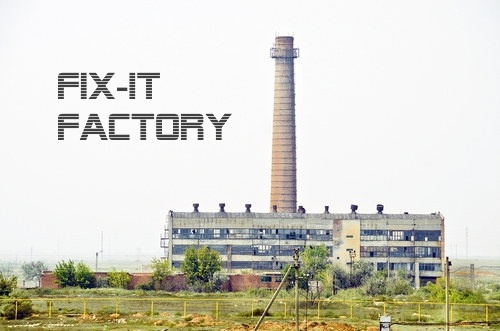At the root of most business problems is some form of waste, either defects in products or services, or time-wasting delay. This is what causes customers to go to competitors. This is what raises costs and erodes profit. This is what ultimately drives owners out of business.
Every product, service, or transaction-based business has two “factories” running simultaneously according to Jay Arthur, author of Small Business Guide to Six Sigma. The “Main Factory”—where you focus most of your energy—produces goods and services for your customers just as planned.
The second factory is less noticeable. It is the “Fix-it Factory,” which cleans up all the mistakes, rework, breakage, returns, scrap, and other problems of the Main Factory. This dark underbelly of the business primarily deals with defects and delays. Every business has a Fix-it Factory that consumes human and financial resources. You might be surprised by the cost of running your Fix-it Factory!

Waste is Expensive
Most small-business owners do not face the brutal reality of waste in their business. However, experts estimate that the average small business has at least 3% waste (Jay Arthur). Many have more. Some have much more!
For a company with one-million dollars in sales, 3% waste amounts to $30,000 in cost. This expense, however, is not paid out of revenue dollars, but is paid out of profit dollars! If the company’s net profit before taxes is expected to be 8%, or $80,000 dollars, 3% waste would reduce the profit to $50,000.
Stated another way, the company has to sell nearly $400,000 more to replace this $30,000 loss in order to achieve the desired profit level. (I don’t want to depress you, but it actually gets worse because there are additional costs to handle the waste.)
Do you realize what I just said? Every waste of time or material comes directly off your bottom line. In this example, waste of 3% of sales translates to nearly 40% in lost profit!
Mistakes are Prevalent
How often have you purchased a product or service and had something in the transaction go wrong? For the last ten years, I have been telling my wife that it seems like half of our purchases have one problem or another.
For example, several years ago our financial services company was teaching workshops to educate our customers on the development of effective business systems and processes. When putting together our little workshop facility, I had to buy a variety of equipment, furniture, and accessories. Here’s what happened:
I purchased eight high-back chairs for the lobby that arrived with the wrong fabric. I had a wall-to-wall counter built that was one-eighth of an inch too long and had to be returned for trimming. The paint came off ceramic candy dishes when removing the price labels. I ordered new blinds for five windows. Four of the blinds arrived together, but the installer had to make a trip back to install the fifth blind. I bought special narrow conference room tables that came with the wrong style legs. The company graciously remade the tables, but this was particularly annoying because it delayed our kick-off date. In the second batch, one table had a large dent in the top. In addition, the skirting on the tables didn’t stay attached so we removed them altogether. The audio-visual person put the ceiling speakers in a different place than I requested. I didn’t make him move them, but it always bugged me.
These common mistakes cost the vendors most or all the profit from my business. However, this is only part of the story. The Fix-it Factory erodes profit in another way. You see, I may never do business with some of these vendors again; they caused me too much aggravation. Worse yet, I may tell other people about my bad experience. It is apparent that the overall cost of 3%-mistakes can be quite enormous!
Walmart Gets It
Walmart is relentless at cutting waste from their business. For example, they have distribution centers as large as twenty-four football fields, with up to nineteen miles of conveyor belts. Many trucks are simultaneously loaded at the docks and dispatched to regional stores. Now get this! Walmart measures the efficiency of its loading operation by how much space there is between boxes traveling down the conveyor belts. If the boxes are touching each other, the maximum number of boxes can be loaded. The space between the moving boxes is actually “waste” or inefficiency, and it increases the cost of every unit of product on the conveyor. This kind of attention to detail is what makes Walmart so successful.
Mistakes and waste are a common occurrence in every company. The typical customer-purchase has many choices, options, and variables, amidst a complex array of promises, processes, and paperwork. Consumer demand for new and improved products and services—never-ending change—puts pressure on maintaining quality. The turnover of people in the workforce reduces overall competence. Holy cow, no wonder so many mistakes are made! It’s not surprising that we go around frustrated with employees we think have messed up, or mumble when customers take their business elsewhere.
Cut Waste to Survive and Prosper
The truth is that times have changed. To survive, small-business owners of today must accomplish the seemingly impossible. They must squeeze out every possible defect and delay from their business operations. They must execute with consistency and exactness. Every part of their business must be systemized to reduce costs and eliminate customer dissatisfaction.
Here’s the deal. You—the business owner—are in control. It is up to you to create a “culture of discipline” (Jim Collins, Good-to-Great) and drive the waste out of your business. If it’s not important to you, it won’t be important to others. Make it a top priority!
I invite you to begin turning your business into a “house of order.” Develop effective business systems and processes that will shut down the Fix-it Factory. Start working on the business and not just in the business (Michael Gerber, E-Myth Revisited). You can do it, and I will show you how!







